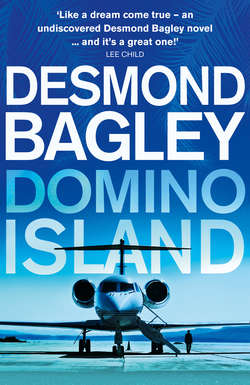Читать книгу Domino Island: The unpublished thriller by the master of the genre - Desmond Bagley, Desmond Bagley - Страница 9
II
ОглавлениеEight hours later I was on a 747 taking off from Heathrow and heading for Campanilla by way of Miami. I travelled first-class, of course; it was written into my service agreement with the company. Somewhere behind me, in the back of this flying barn and jostled by the common ruck of economy flight passengers, was Owen Ogilvie, the official representative of Western and Continental Insurance Co. Ltd. To an eye untainted by suspicion, he was the company man sent out to enquire into the death of David Salton. He would do the expected and leave me to a quiet and restful anonymity.
Jolly disapproved of my service agreement; it offended his sense of the fitness of things. There was nothing he could do about it though, since I negotiated directly with the board.
During the flight I studied Salton’s policies. They were all fairly standard and with no trick clauses and I couldn’t see how Jolly could weasel his way out of paying. Whether Salton had died naturally, been murdered or committed suicide, the payment would have to be made. All that was at issue was the timescale and the most that Jolly could extract would be the interest on £500,000 for two years – say £90,000, or thereabouts.
Not finding much there, I went up to the bar which the airline thoughtfully provides for those of the jet set who can afford first-class passage. I took with me a handbook on Campanilla, which the efficient Mrs Hadley had dug up from somewhere. It offered interesting reading over a drink.
The highlights of this Caribbean jewel appeared to be the climate, the swimming, the sailing, the fishing, the cuisine and the tax structure. Especially the tax structure. The main feature of the tax structure was that there wasn’t much of it. If the United States was the Empire State Building, then Campanilla was a marquee – all roof with nothing much to hold it up, and vulnerable to financial gales.
I examined the historical section. Campanilla was originally Spanish, colonised in the sixteenth century. The British took over in 1710 during one of the fast shuffles of the War of the Spanish Succession and stayed until the twentieth century, when to have colonies offended world opinion. During this period it was called Bell Island but, on attaining independence, it reverted to the Spanish name of Campanilla. Probably some public relations geek thought it a more exotic and fitting name for a tropical paradise.
The fold-out map at the back of the handbook showed that the island really was bell-shaped. The lower rim of the bell was scooped out in a huge bay and the clapper was formed by Buque Island, separated from the main island by Pascua Channel. Opposite Buque Island was the capital of San Martin. Two misshapen peninsulas on opposite coasts represented the trunnions by which the bell would be hung. Northwards, at the top of the ‘bell’, was a coral formation, almost atoll-like, forming a perfect ring called El Cerco, which represented the ring to which the bell rope would be attached. Nature was imitating art in a big way.
Further study was profitless so I slept.
